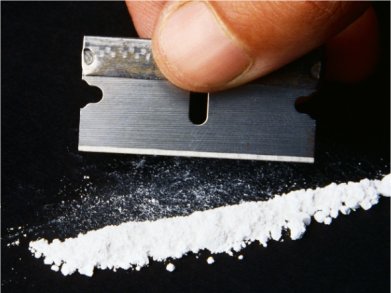In two landmark studies published today in the journal Drug Testing and Analysis (DTA), UK and Swiss research teams reveal two techniques proven to identify dissolved cocaine in bottles of wine or rum. These tools will allow customs officials to quickly identify bottles being used to smuggle cocaine, without the need to open or disturb the container.
Cocaine is among the most common drugs of abuse and a large number of imaginative techniques of smuggling cocaine through border controls have been reported in recent years. One of the latest techniques involves smuggling cocaine dissolved in liquids, which led to the death of a UK man last year after unknowingly drinking from a contaminated bottle of rum. It is currently impossible for customs to check alcohols for cocaine without physically opening the bottle and causing damage, which is difficult in large or expensive alcohol shipments. Furthermore, a non-invasive approach has the advantage that it would not arouse the smuggler’s suspicions and therefore would allow investigators to track the recipient.
The techniques described in the DTA papers utilise Raman spectroscopy (RS), which uses laser light to identify molecules, and magnetic resonance spectroscopy (MRS), which is the technique behind clinical MRI scanners. Both techniques were able to identify levels of cocaine far lower than the levels commonly used in smuggling.
The RS study was carried out by researchers from the Universities of Bradford and Leeds in the UK and used a portable scanner to test cocaine dissolved in ethanol and several branded light and dark rums, in a variety of coloured glass containers; clear, brown, light green and dark green. The cocaine was detectable in all liquids tested and through all of the glass colours.
“Until now it has been difficult to detect cocaine in liquid form in these environments. However our study shows that using an analytical technique such as Raman spectroscopy can successfully detect the presence of these drugs without removing specimens from their containers,” said Dr. Tasnim Munshi, one of the researchers based at the University of Bradford. “We believe a portable Raman instrument will prove vital in the fight against illegal drug smuggling by allowing for the fast and effective screening of different solutions over a very short space of time.”
The MRS study was carried out by a Swiss team, led by Dr. Giulio Gambarota of the Swiss Federal Institute of Technology Lausanne. The researchers used a MRI scanner to test wine bottles contaminated by cocaine. The MRI scanner is not portable but can test large cargos at once in a few minutes, including set up and evaluation of the results.
“By fostering collaboration between police or customs officials and a local medical department, this technique can be used to evaluate large numbers of bottles in a short time, giving information not only that there is another substance in the alcohol as with current scanning techniques, but exactly what that substance is,” said Gambarota. “This method could also be used in other sorts of smuggling where drugs are dissolved into liquids, so there are many further opportunities for use.”
________________________________________
- A Forensic Case-Study: The Detection of Contraband Drugs in Carrier Solutions by Raman Spectroscopy
K. Page, T. Munshi, Burnett, M. D. Hargreaves, H. G. M. Edwards
Drug Testing and Analysis 2010.
DOI: 10.1002/dta.169 - Non-Invasive Detection of Dissolved Cocaine in Wine Bottles by Magnetic Resonance Spectroscopy
G. Gambarota, C. Perazzolo, A. Leimgruber, R. Meuli, P. Mangin,M. Augsburger, S. Grabherr
Drug Testing and Analysis 2010.
DOI: 10.1002/dta.179



